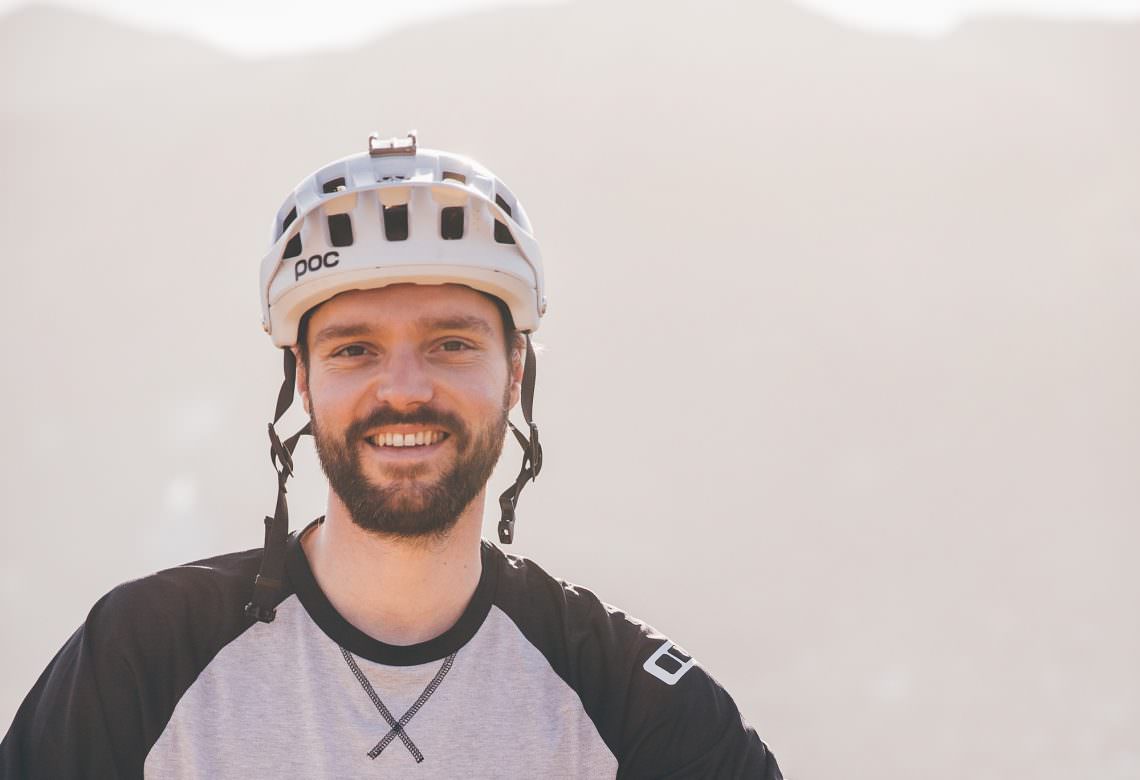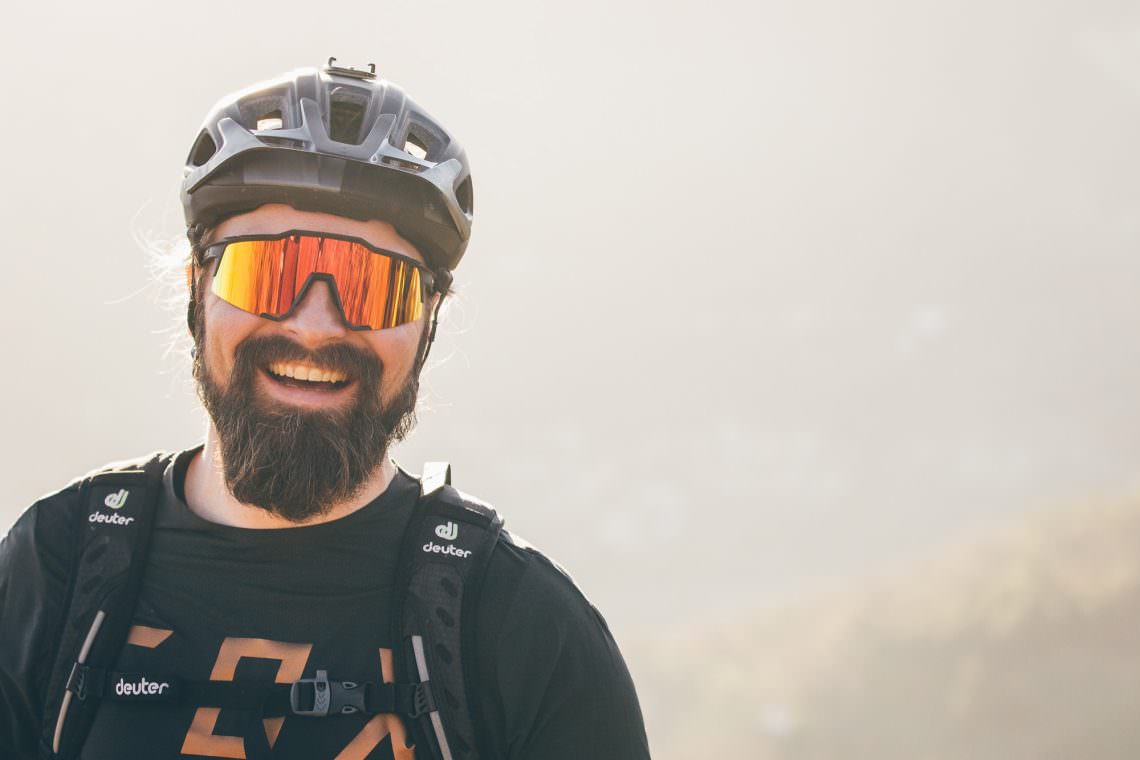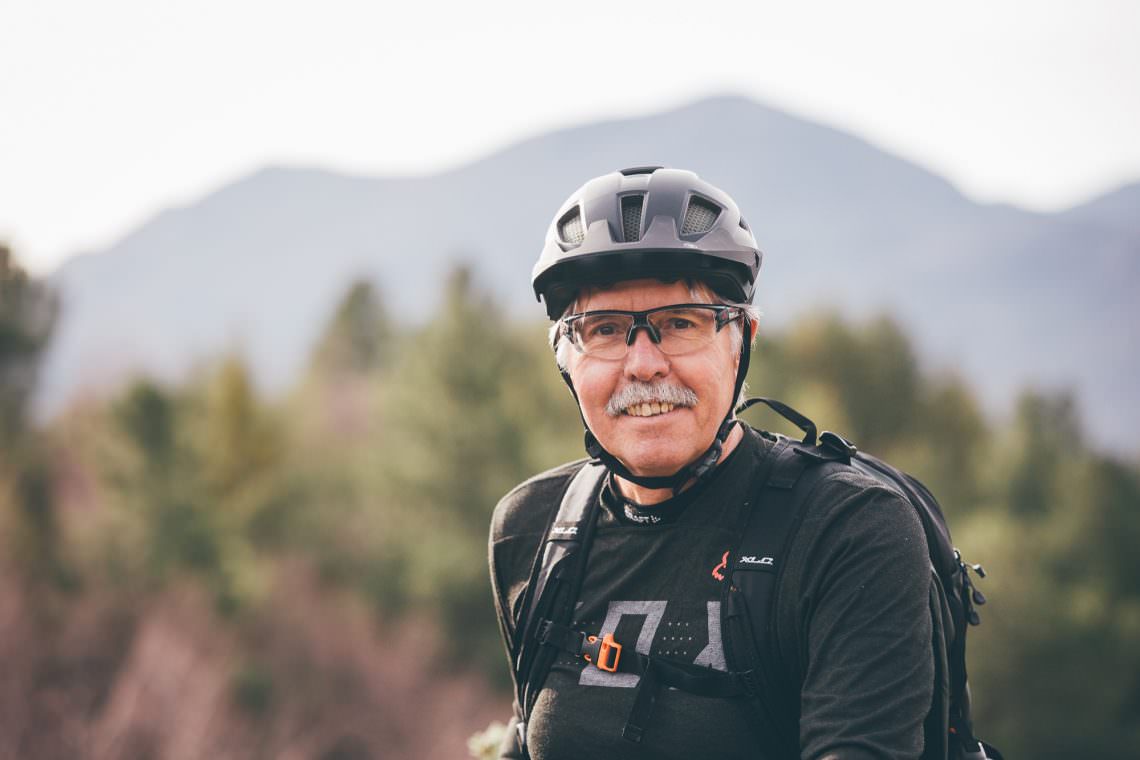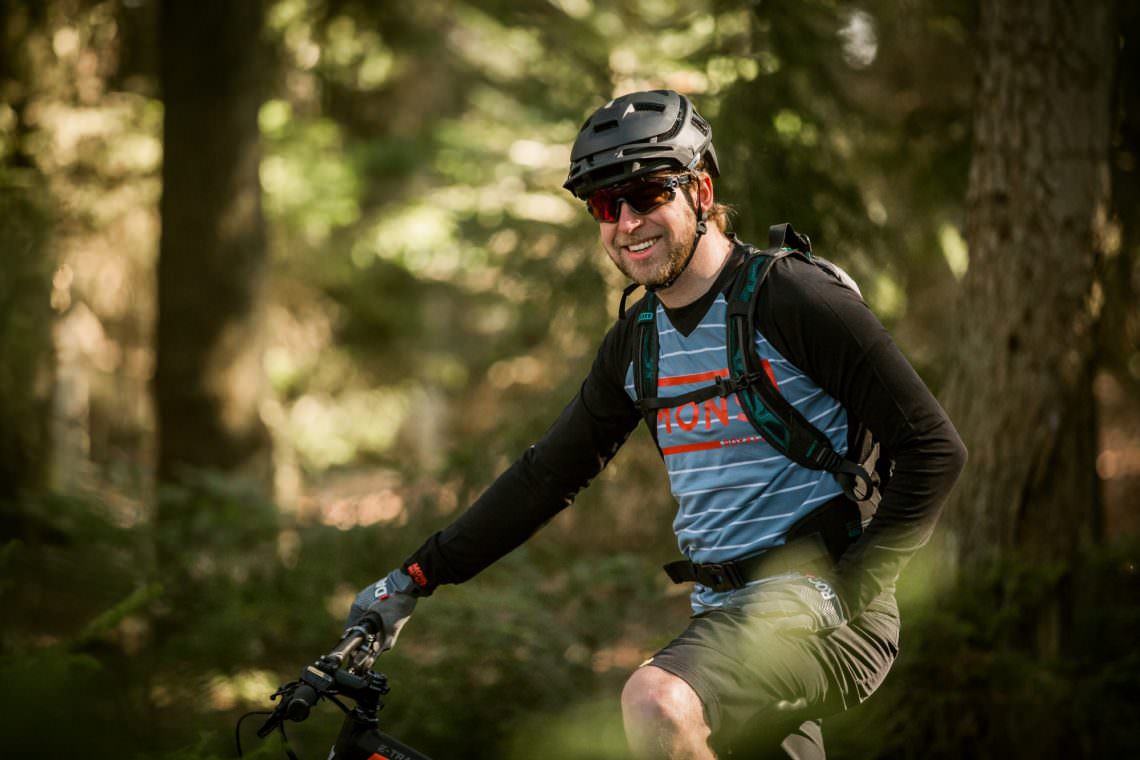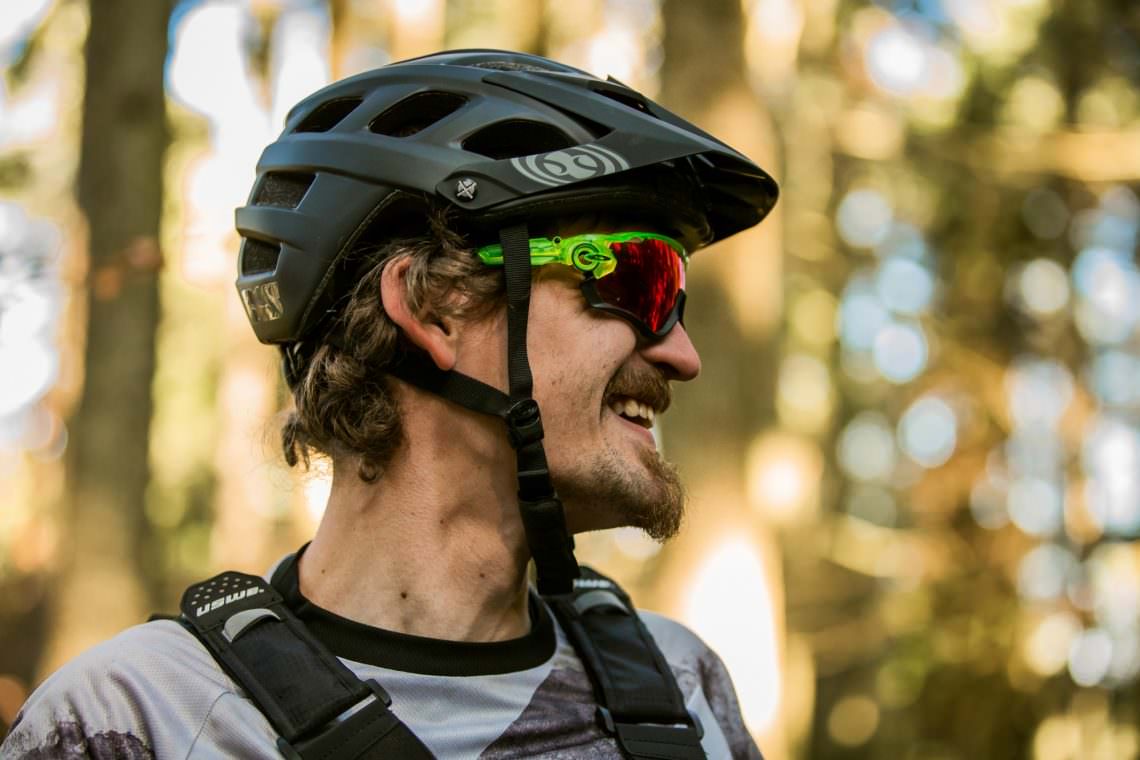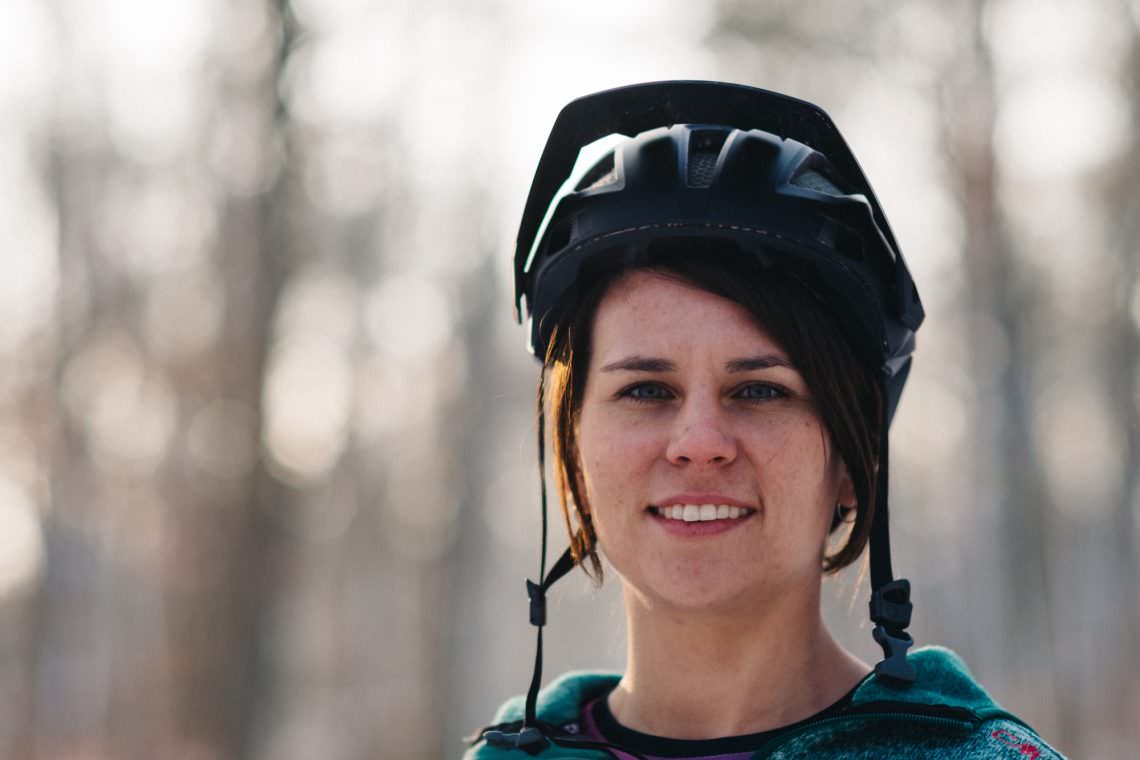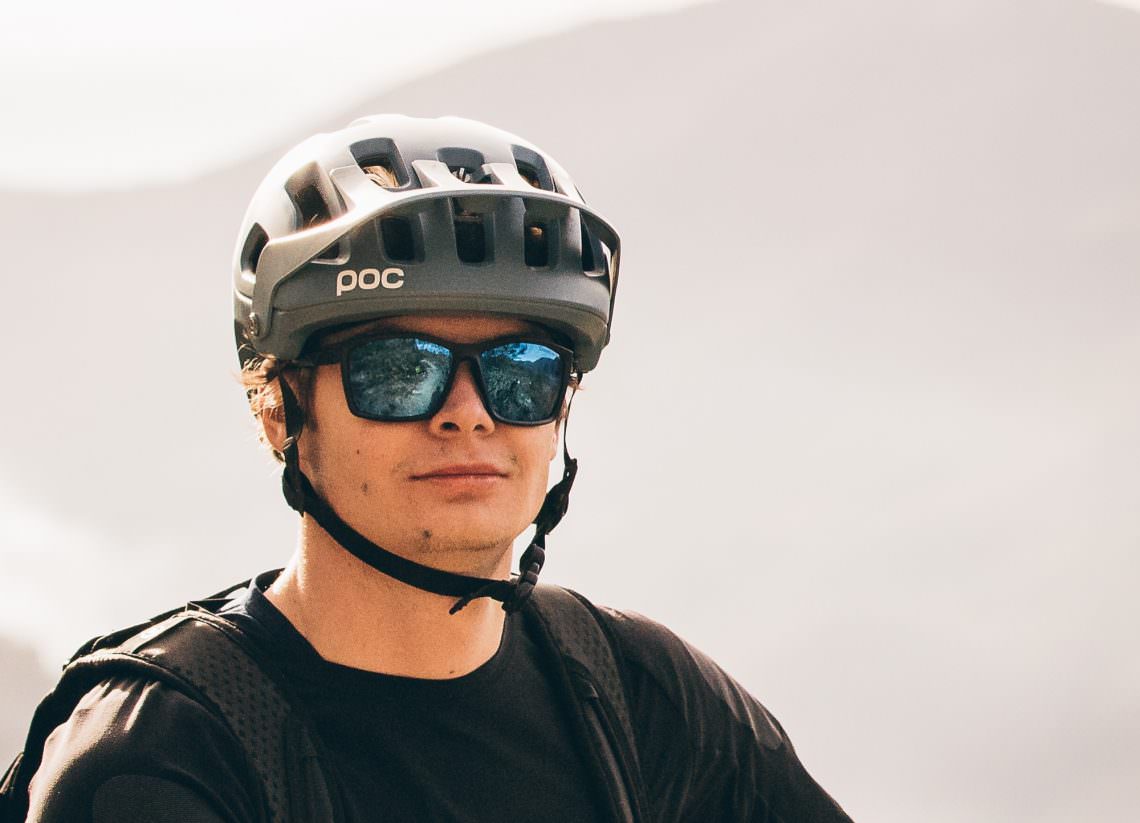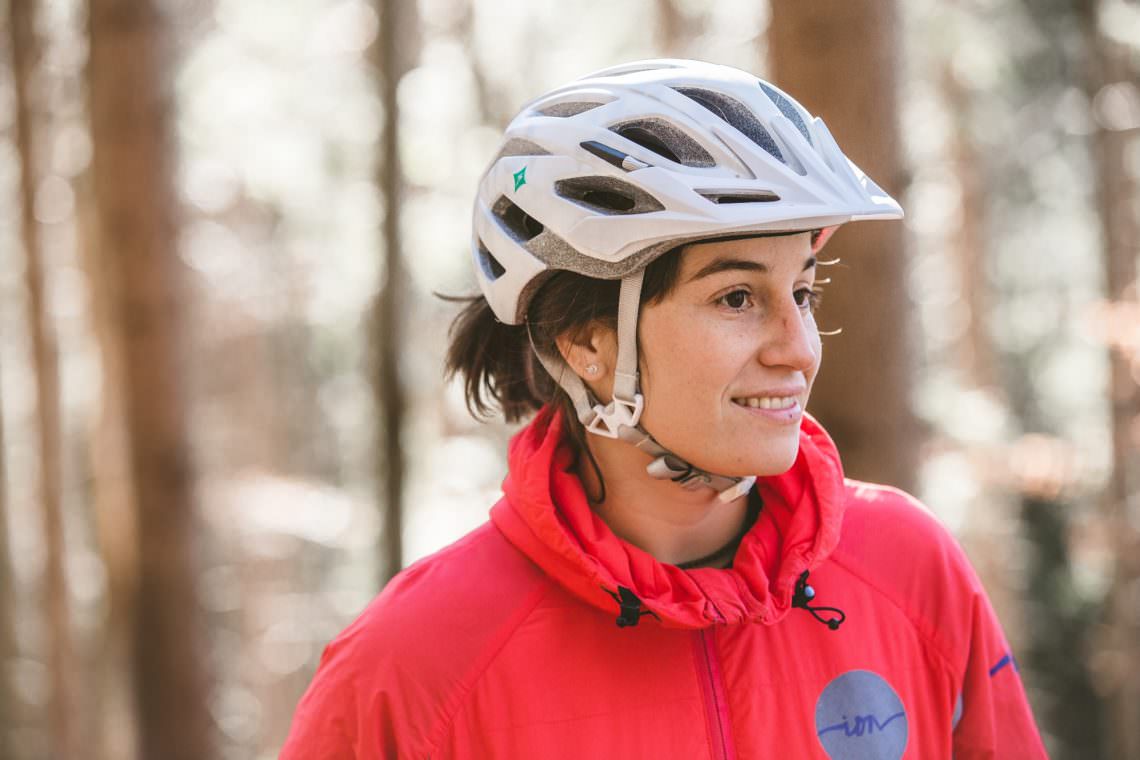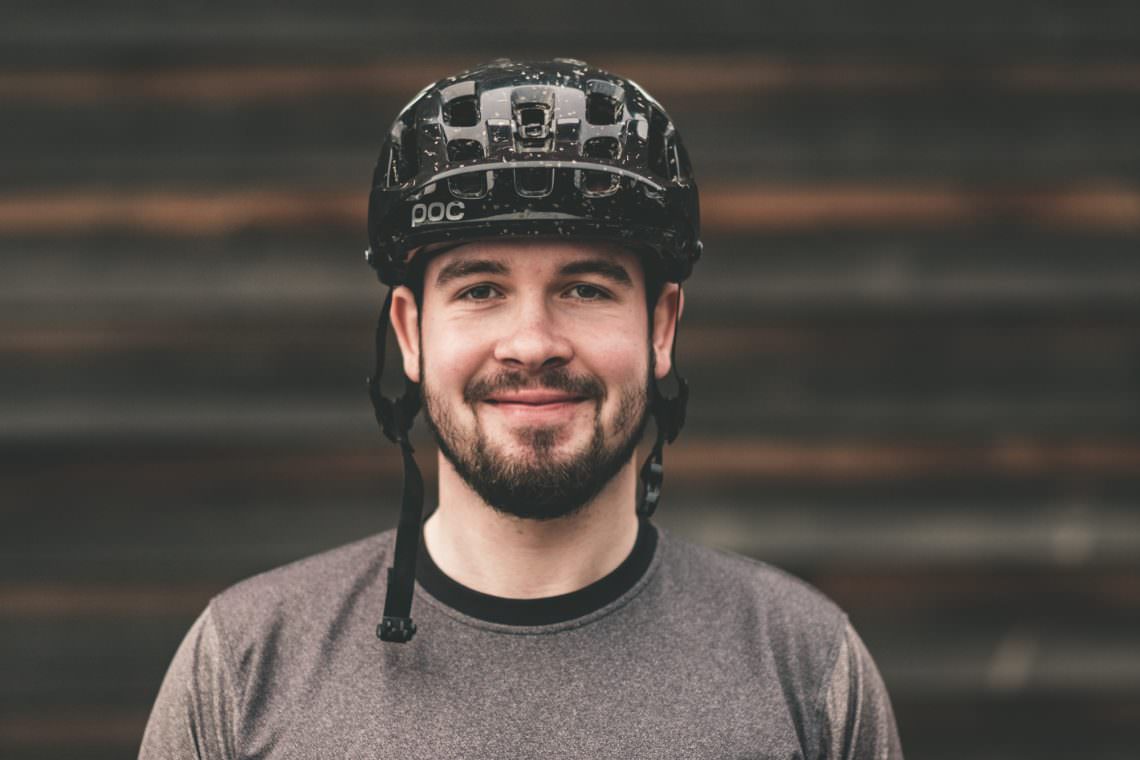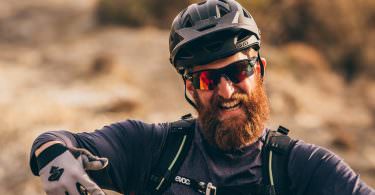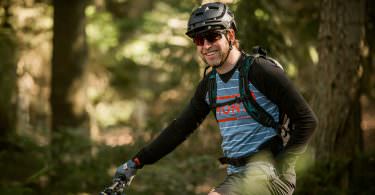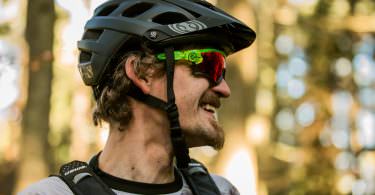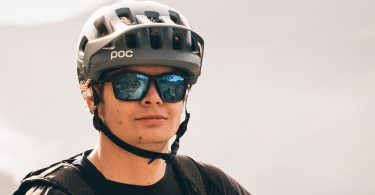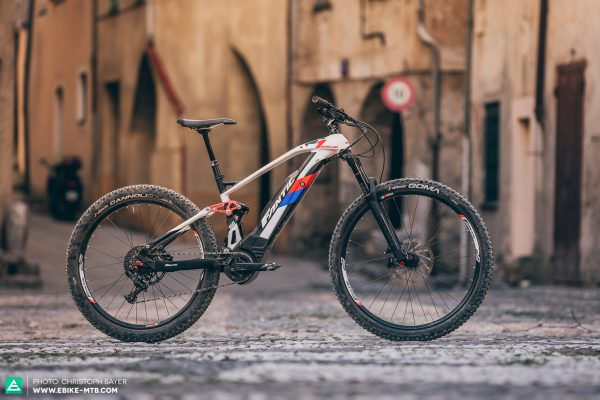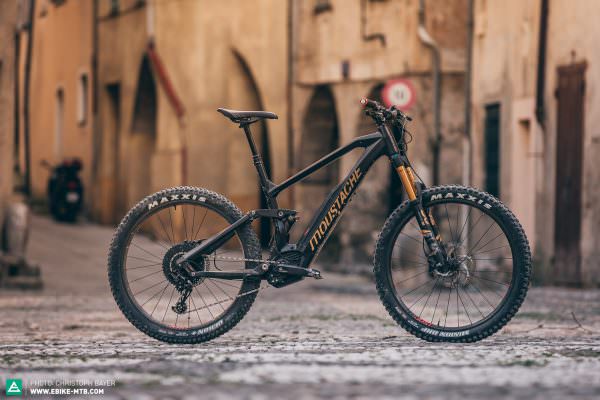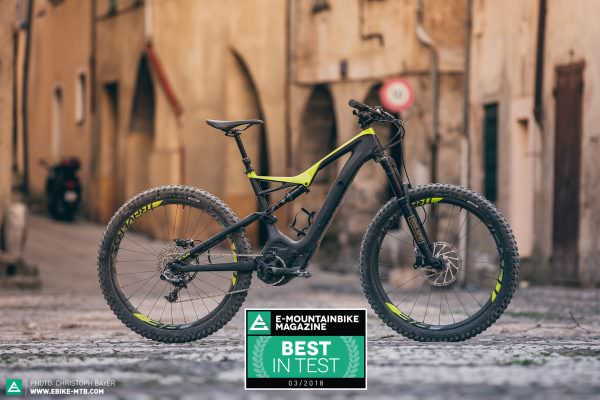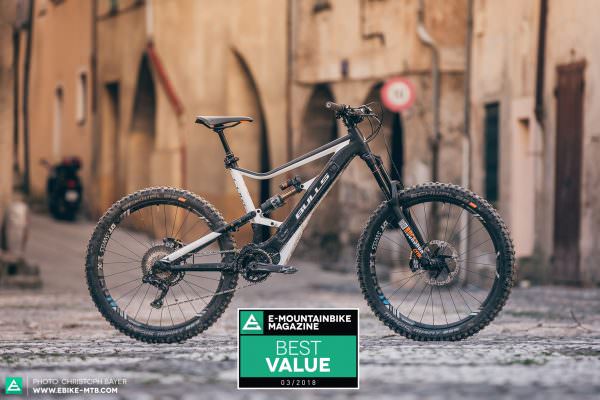Which is the best eMTB of 2018? We headed to the south of France and tested twenty-five of the most exciting bikes of the coming season to find out exactly that. To make things easier, we divided the bikes into two price classes; in this issue, we present to you twelve high-end models without an upper price limit.
Update March 2019: In the meantime, there’s a new group test with 2019 bikes: The best eMTB you can buy
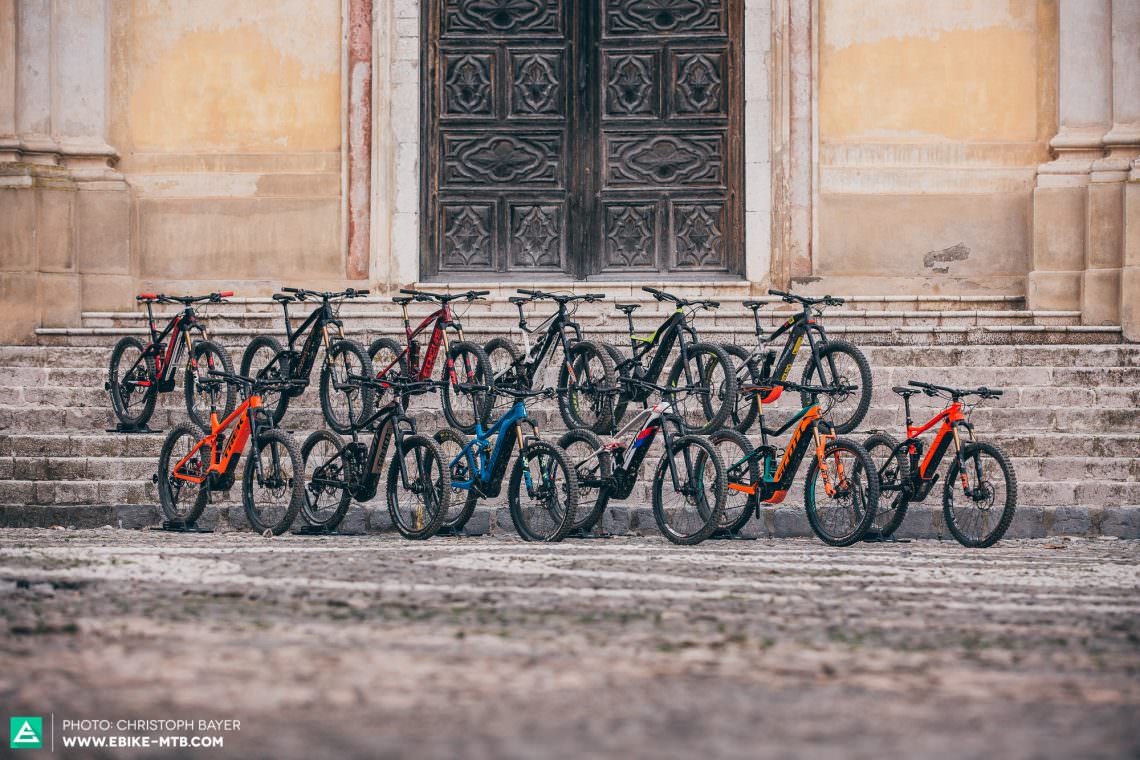
What makes the perfect eMTB?
eMTBs appeal to an extremely broad target group: some use their eMTB for daily commuting, others for after-work or weekend rides on maintained gravel roads, and others plan to do an electrified alpine traverse or even an action-packed visit to the bike park. The good news is that many eMTBs are jacks of all trades, covering a very wide range of uses. Others, unfortunately, may disappoint with poor spec or nervous handling.
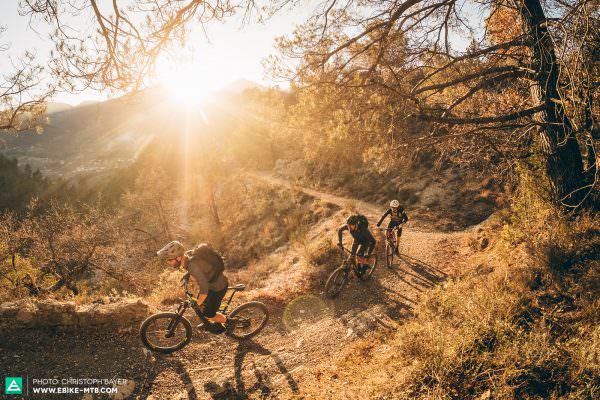
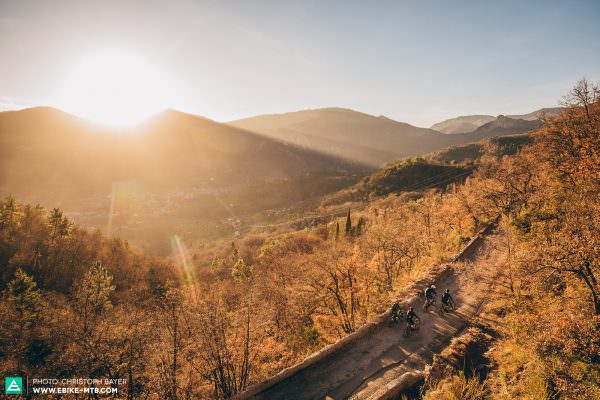
How and where were the bikes tested?
Our twelve-person test team not only tested the most exciting eMTBs of the 2018 season in the cold German winter, but also took them to the south of France for two weeks (we will spare you the mandatory muddy photos at this point). We climbed to the top of peaks, rummaged through deep mud, rode over countless roots and ruts on the way up and even more on the way back down, laughed, cursed, lived through many unforgettable moments, and took the bikes – and sometimes ourselves – to the limit.
In order to make the final judgement of every bike as objective as possible, the test team includes ex-racers and engineers as well as amateur riders and eMTB newbies. Even if we explored the bikes’ performance on the trail to the limit, we attach as much importance to their everyday usability. A potent and balanced bike which shines on demanding singletrack and is fun to ride should ride just as well on more moderate trails. And even if you’re not taking yourself and your bike to the limit every time you ride, it’s good to know that the bike is prepared for any situation you might feel like throwing at it.
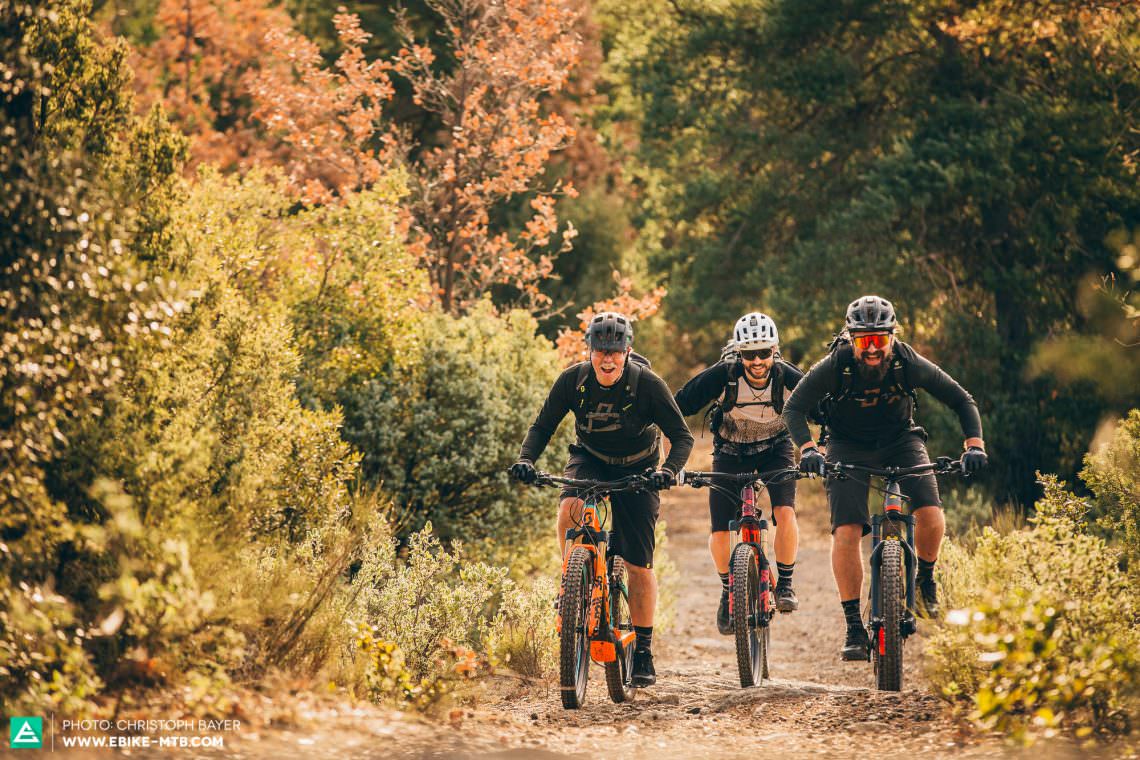
The test team
What makes a good eMTB? We asked our multifaceted test team what they thought is important for which type of riding.
“Winding down, spending time in the outdoors with friends without stress – nowadays, as an ex-racer, a reliable and low-maintenance bike with great handling is important to me. I want to have a lot of fun and spend as little time as possible in the workshop.”
The rating – why school grades are pointless
eMTBs appeal to a very broad audience, so in practice, the same model is used in very different ways. A final rating according to school grades does not do justice to the individual character of the bikes and doesn’t provide a sufficient system of orientation for new buyers (which is exactly what we aim to do). For this reason, there is a separate article for each bike in the group test; in each article we detail the most important points, informing you comprehensively about the bike’s strengths and weaknesses and the ideal type of riding it is suited for. We also have five-star ratings, which provide condensed snippets of information about the character of the bike for a quick and easy overview.
The Best in Test and Best Value tips do not result from the sum of star ratings, but by the assessment of the entire test team, taking into account the overall concept of the bike. It would be methodologically wrong to only add up the star ratings to make a final judgment in a scoring system – saying that something is “good” will not help anyone if they don’t know what it is for and for whom it is “good.” For this reason, we give a clear recommendation in every test result for which type of rider and purpose the bike is suitable and which not. The bikes themselves are as individual as the riders are – we just want to provide you with all the information you need to make a well-informed decision before buying. Here’s to long-lasting fun!

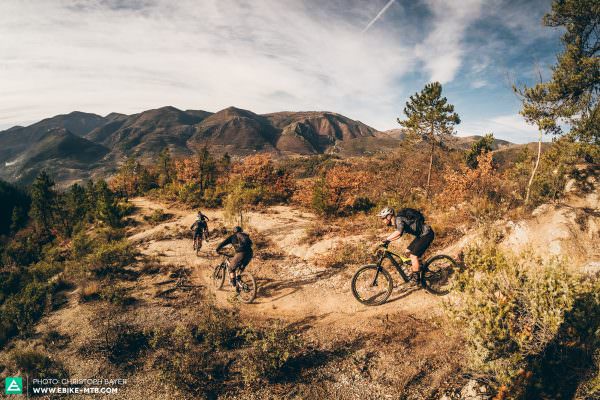
The most important takeaways
An eMTB is judged by different criteria compared to a classic mountain bike: weight, suspension travel, and efficiency play a much smaller role.
How important is the motor really?
Many years of experience have clearly shown that it isn’t possible to make a universal and realistic estimate of an ebike’s range. The range of an eMTB depends on countless factors such as the support level, terrain, rider weight, environmental conditions, and cadence. Those who demand a lot of power from the motor consume a lot of electricity. If you want to travel far, you’ll have to save battery power. Read more about this topic in our article The truth about lab tests.
How important is the motor really?
“I’d like a Bosch bike!” This is what bicycle dealers hear several times a day from new customers – and it’s the biggest mistake you can make when buying an ebike. Sure, the motor is important. However, you don’t buy a car just because of its engine. If you want to be happy with your eMTB in the long term, you have to consider a bike as an overall concept. This group test will help you to find out which bike is best for which type of rider, terrain, and riding style. The motors of the big names in the industry all work extremely well, but differ in their purpose and functionality.
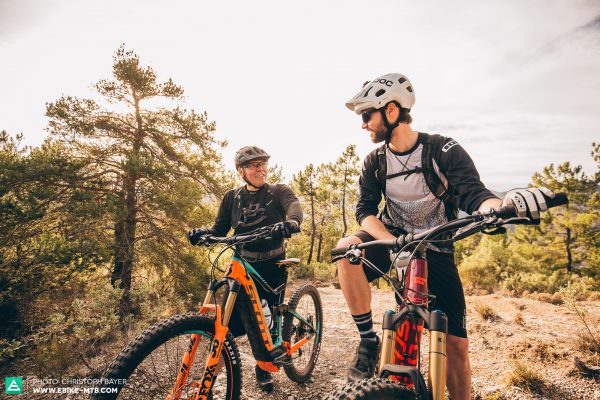
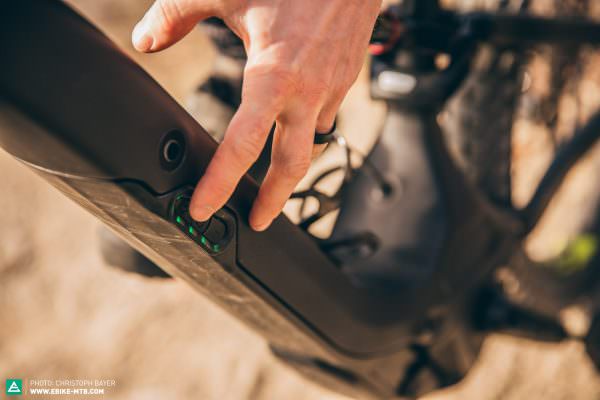
Reducing a bike to its electric motor is wrong – you don’t buy a car just because of the engine.
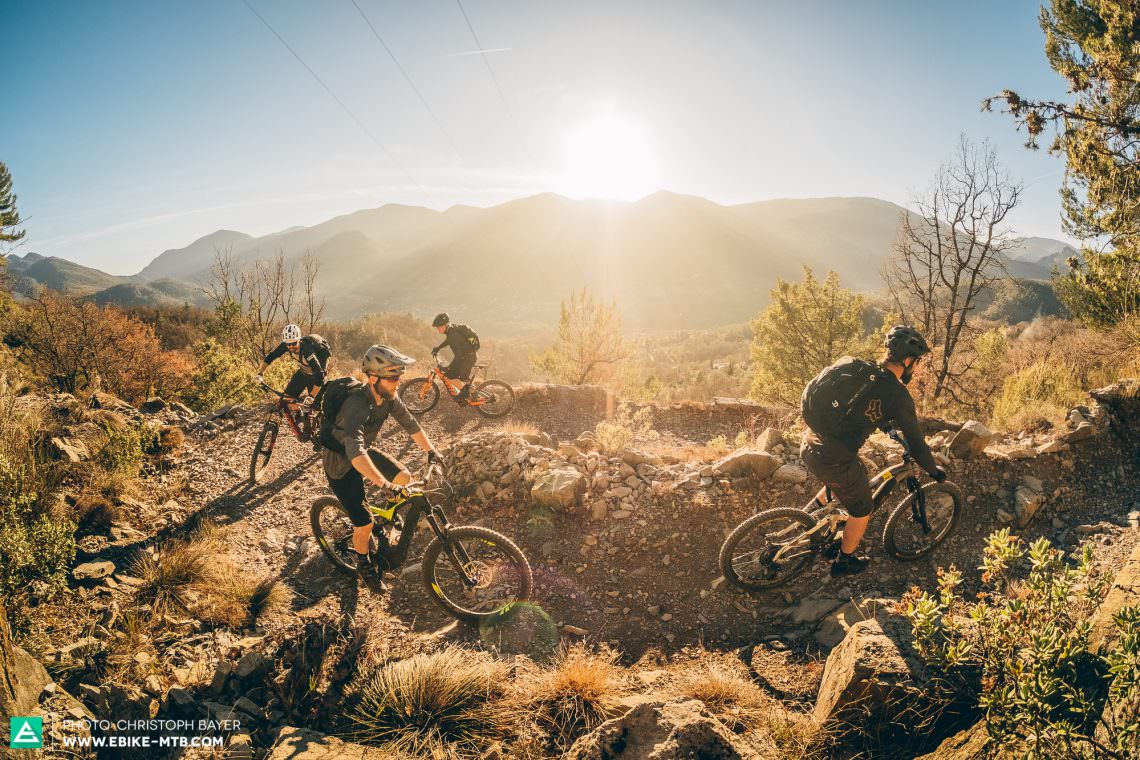
How much does a good eMTB weigh?
Due to high total weights of over 20 kg, it doesn’t matter whether the scale stops at 21.44 kg or 22.2 kg for a modern eMTB. In our test, the difference between the lightest and the heaviest bike was just under 4 kg. This is not to be ignored… but a little extra weight in the form of functional, reliable componentry is better than an ebike designed and constructed to be as light as possible, at all costs, but which ends up in the workshop more often than on the trail.
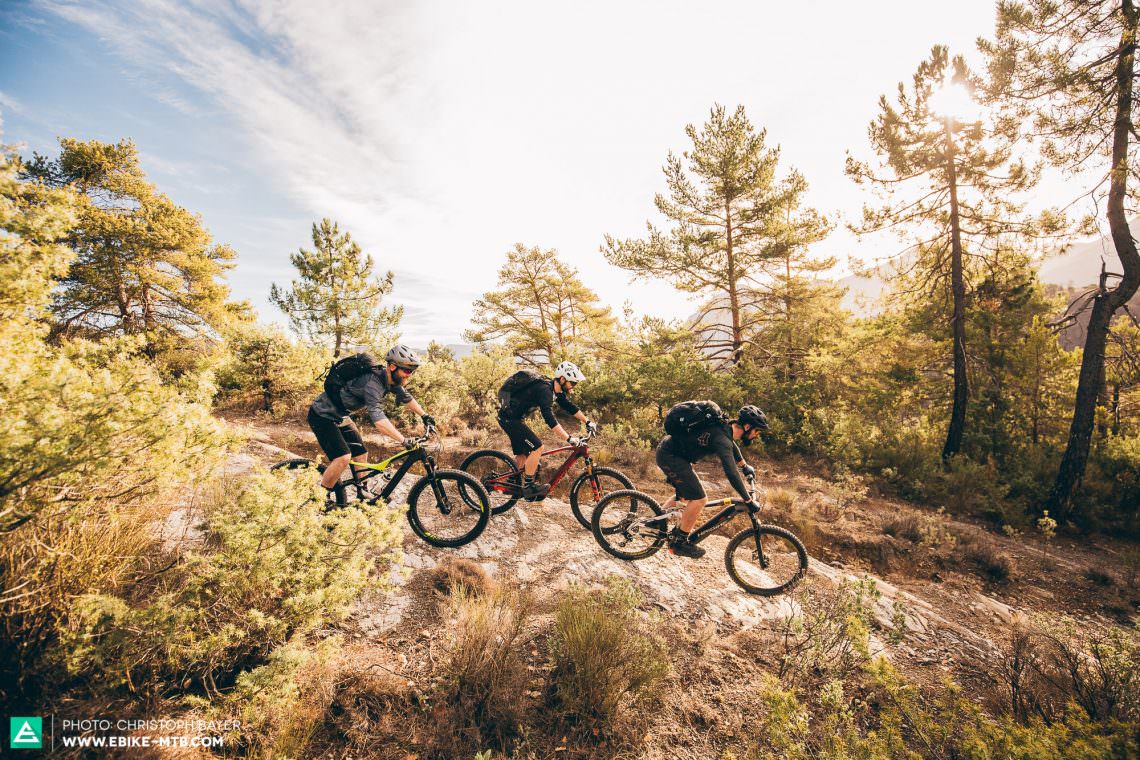
Integrated rechargeable batteries look nice…
…but currently offer only very few advantages, such as a cleaner design and the option to mount a bottle cage in a front triangle. If you want to take a spare battery in your backpack, you will have to struggle with the larger dimensions of the integrated batteries, or you won’t have the possibility to take one with you at all. Depending on the integration, handling the integrated rechargeable battery (e.g. the on-button for Shimano-Intube) can be awkward. Also, the longer battery results in a higher centre of gravity. The fact is that there are good reasons for continuing to use a standard external battery.
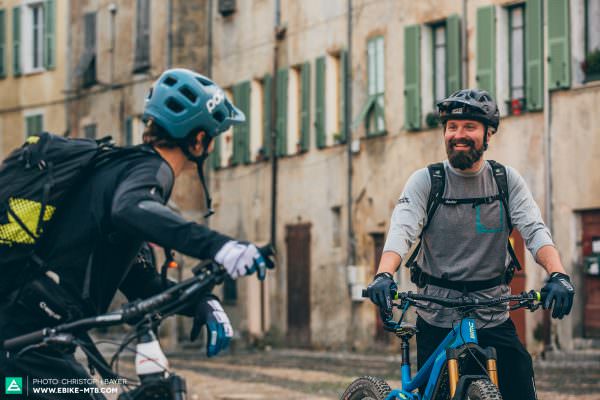

Wide tyres – a plus in safety!
Wide tyres are an absolute must on an eMTB. They offer more traction, provide extra comfort, increase stability, and they simply look cooler. Tyres with a width of 2.5″ – 2.8″ have proven to be the ideal size. The performance of the MAXXIS Minion tyres is particularly impressive; they provide the best grip and stability. To get the best performance, tyres should be ridden at approx. 1.2 – 1.6 bar air pressure.
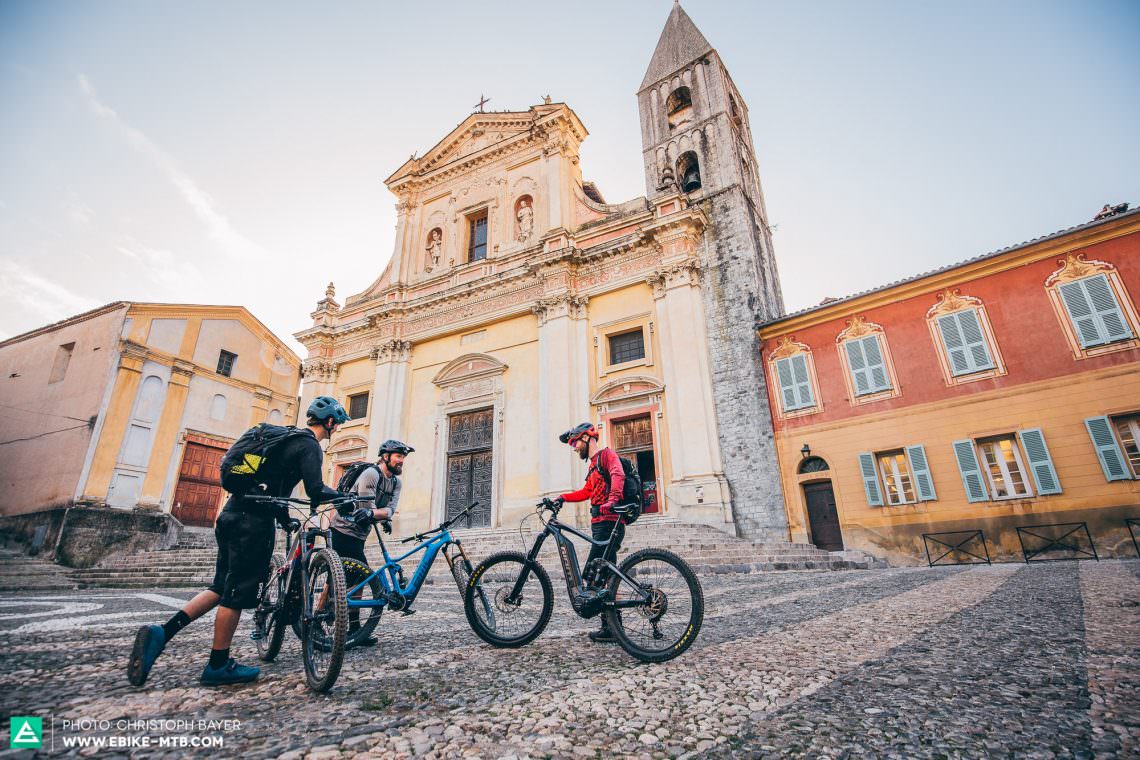
Is it sensible to buy an eMTB for well over € 5,000? Probably not. Will you feel cool buying one of these bikes? You most definitely will! These bikes are the supercars and luxury sedans among eMTBs, where the best bike manufacturers in the world have pulled out all the stops regarding design, detail, and technical sophistication. Yet, while some of them tend to remind of a 911 when it comes to handling, others ride like a Hummer H2 – the price tag alone doesn’t predict anything about the actual performance of a bike. In our search for the best eMTB of 2018, we tested the twelve most promising models.

Bikes tested
| Bike | Price | Weight | Motor | Battery |
|---|---|---|---|---|
| BMC Trailfox AMP LTD | 1€ 1.999 | 22.57 kg | Shimano | 500 Wh |
| BULLS E-CORE EVO EN Di2 | € 6.499 | 23.27 kg | Shimano | 378 Wh |
| FANTIC XF1 Integra Enduro 160 | € 5.190 | 24.92 kg | Brose | 630 Wh |
| FOCUS SAM² PRO | € 7.699 | 20.96 kg | Shimano | 378 Wh |
| Giant Full-E+ 0 SX Pro | € 5.999 | 23.15 kg | Yamaha | 500 Wh |
| Haibike XDURO Nduro 10.0 | € 6.499 | 24.54 kg | Bosch | 500 Wh |
| Moustache Samedi Race 11 | € 8.599 | 21.61 kg | Bosch | 504 Wh |
| ROTWILD R.E+ ULTRA | € 7.799 | 22.57 kg | Brose | 648 Wh |
| SCOTT E-Genius 700 Tuned | € 7.199 | 23.58 kg | Shimano | 504 Wh |
| Specialized Turbo Levo S-Works Carbon | € 9.999 | 21.23 kg | Brose | 504 Wh |
| Thömus Lightrider E1 – Team Di2 | CHF 10.015 | 21.75 kg | Shimano | 500 Wh |
| Trek Powerfly 9 LT Plus | € 5.999 | 23.41 kg | Bosch | 500 Wh |
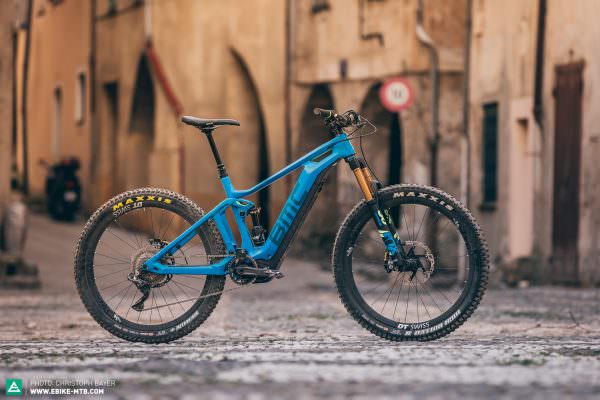
150/150 mm (f/r) | 22.57 kg | € 11,999
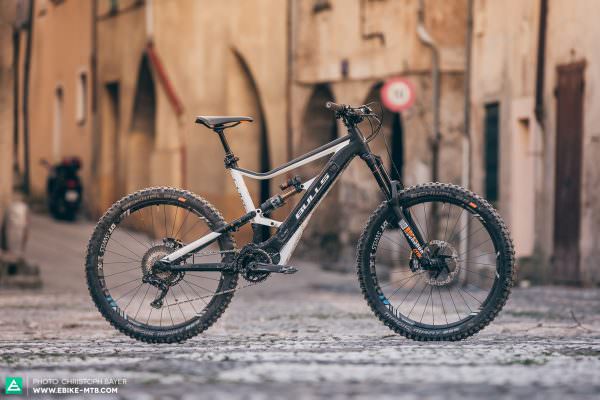
180/180 mm (f/r) | 23.27 kg | € 6,499
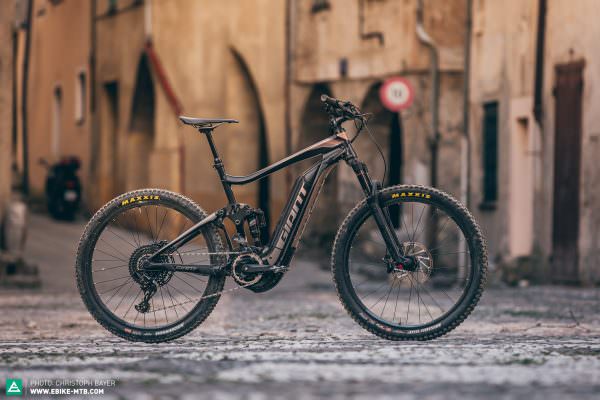
160/140 mm (f/r) | 23.25 kg | € 5,999

180/180 mm (f/r) | 25.54 kg | € 6,499

150/150 mm (f/r) | 23.58 kg | € 7,199
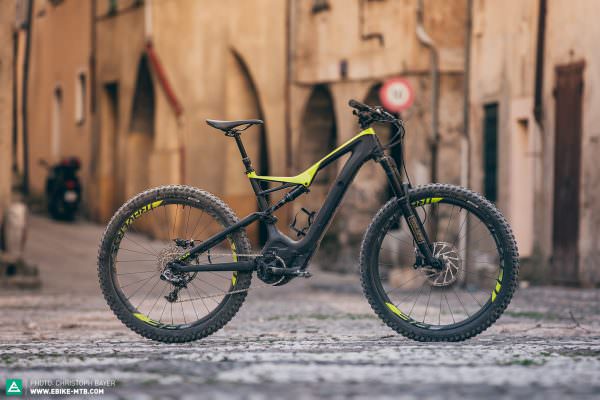
150/135 mm (f/r) | 21.23 kg | € 9,999

150/150 mm (f/r) | 21.57 kg | CHF 10,015

150/150 mm (f/r) | 23.41 kg | € 5,999
Is more battery capacity always better?
This is a question the designers and engineers of the FOCUS and BULLS bikes of this group test asked themselves. Instead of speccing them with the standard 500 Wh batteries, both have developed a sophisticated alternative. The idea: instead of riding around with unnecessarily large batteries and unnecessary weight on short tours, they integrated a smaller 375 Wh or 378 Wh battery into the bike. If you don’t have enough power for long loops, you can double the range of both bikes with an additional battery for up to a full 750 Wh. While the second battery is mounted in the front triangle of the FOCUS, it disappears sideways in the downtube of the BULLS. In practice, you’ll need the second battery relatively often with both bikes, and in either case, you should consider the additional € 499 investment in a second battery pack when you buy the bike.
Does carbon make sense on an eMTB?
A carbon frame shaves off several hundred grams of weight, of course. However, this is largely irrelevant when it comes to eMTBing. The two major advantages of carbon on eMTBs are, on the one hand, greater freedom in optimising the frame design and, on the other hand, increased stiffness. Thanks to carbon, smooth transitions can be achieved, better facilitating the integration of motor and battery. Unfortunately, the magical black material also has a few potential disadvantages. Carbon has poorer thermal conductivity, which means that heat is dissipated less efficiently with a fully integrated motor, and stiffer is not necessarily always better. Frames and wheels require a certain amount of flex to be comfortable and to generate enough traction through curves. Buying a carbon eMTB can currently only be justified by aesthetics rather than functionality.

How much suspension travel does an eMTB need?
Basically, there is no reason to ride an eMTB with less than 130 mm of travel. With classic bikes, more travel usually means both less efficiency and poorer climbing characteristics, but this is not true with eMTBs – at least not up to a certain point. The best example is the Specialized Turbo Levo, which with its 135 mm of travel at the rear handles much better than most of the other, longer travel bikes in the group test. Also, eMTBs with suspension travel of 180 mm or more are often noticeably less efficient, as clearly exemplified in this test by the Haibike XDURO Nduro. It climbs a lot slower than other bikes using the same motor and the same level of assistance, an experience you will find with almost all other long-travel bikes from other manufacturers. The exception is the BULLS E-CORE EVO EN Di2: in direct comparison, it climbs a lot more efficiently, even though it also offers 180 mm of travel. The ideal compromise between uphill and downhill performance usually lies somewhere between 130 and 160 mm of travel.
Tops
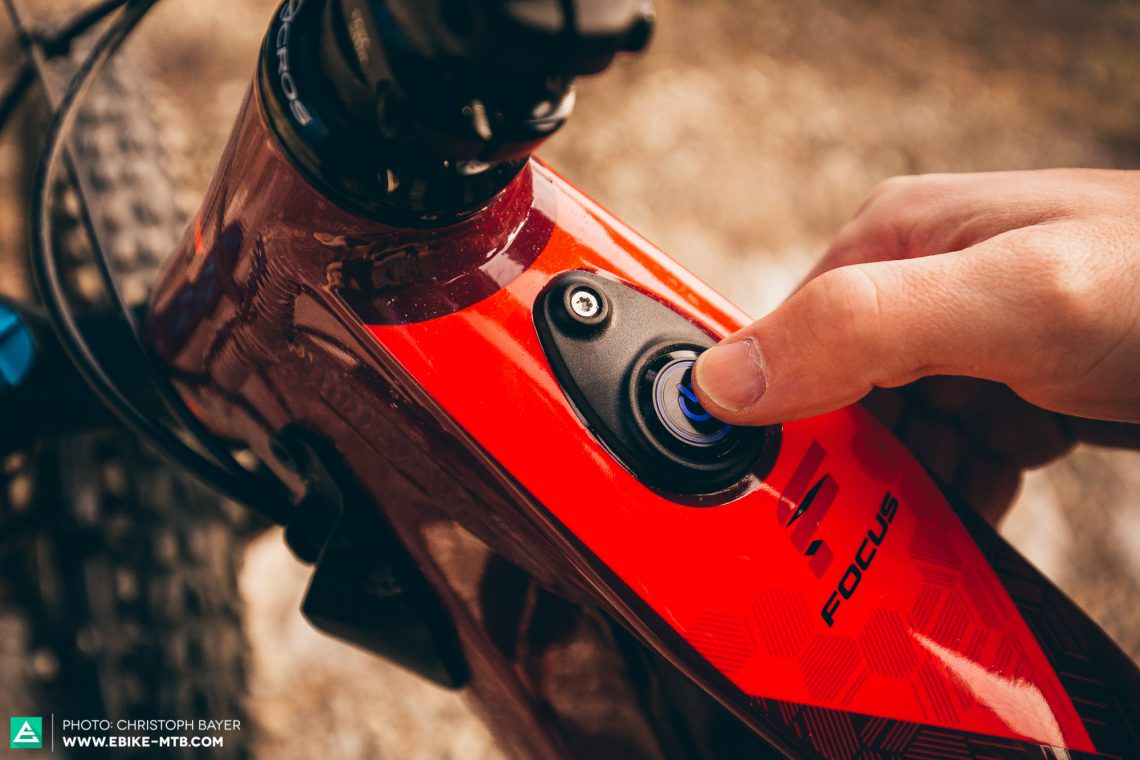
No ebike is more fun to switch on than the FOCUS SAM² PRO. The power button is integrated into the top tube and is a haptic dream.
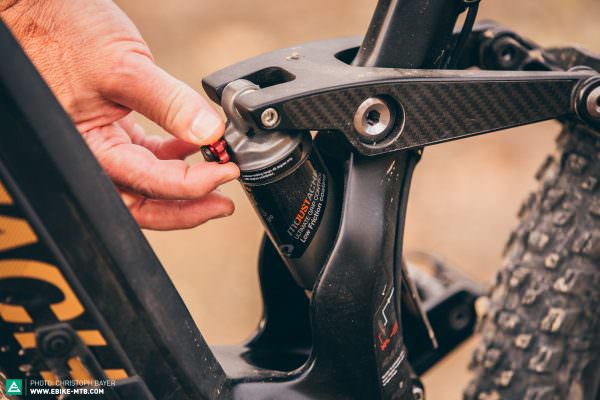
The Ultimate Grip Control shock developed by Moustache is setting the standard. The bike impressed with endless amounts of traction, both uphill and downhill.

The downtube of the BULLS has room for two removable 375 Wh batteries. The total capacity of 750 Wh ensures maximum range.
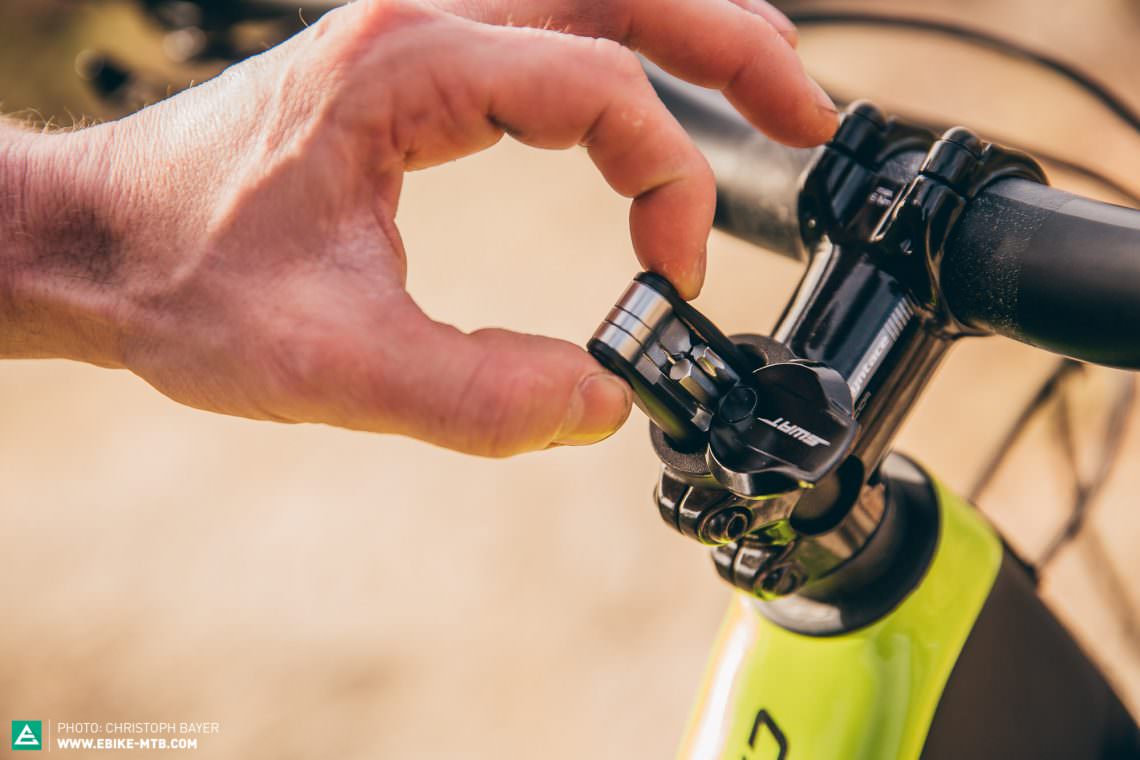
The multi-tool is inserted into the head tube and can be removed within seconds.
Flops
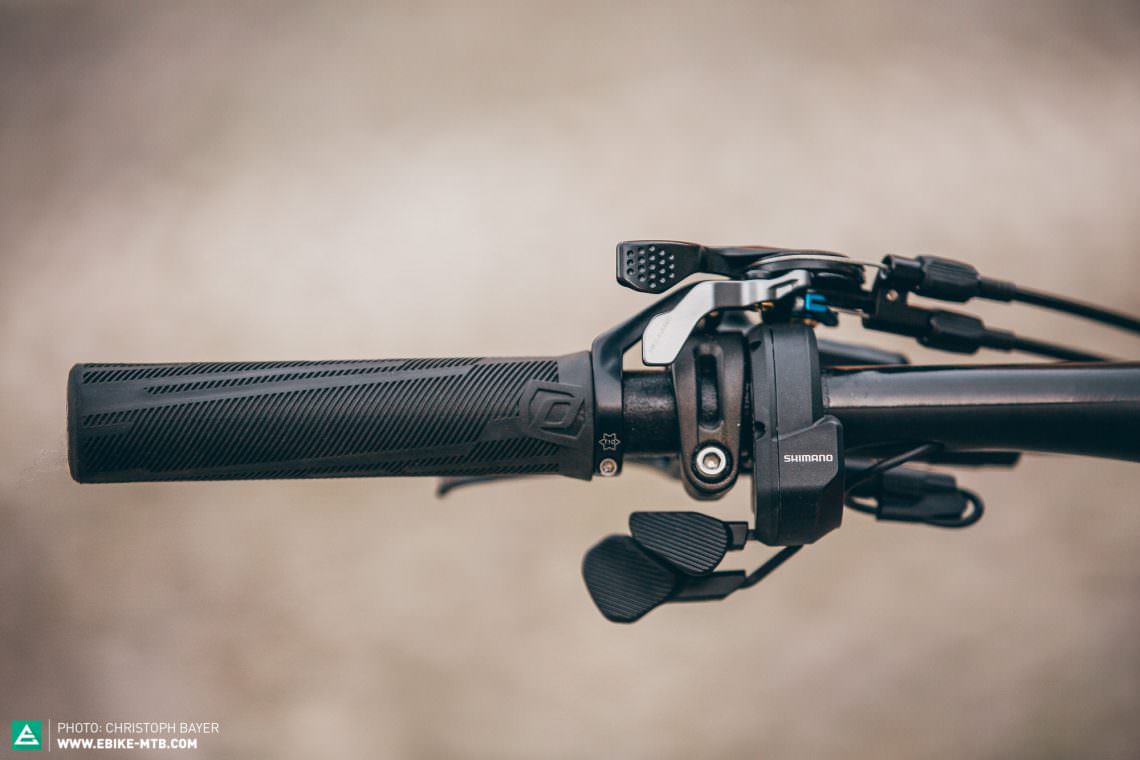
The many levers on the handlebar of the SCOTT are confusing and take a long time to get used to.

The suspension of the Haibike XDURO Nduro consumes a lot of energy, which leads to the fact that you always ride with a higher level of assistance than with other eMTBs.
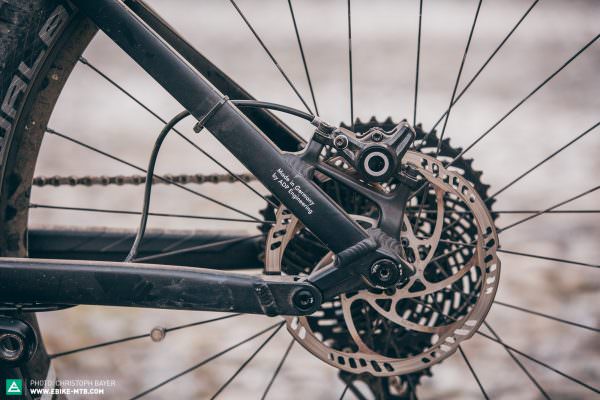
ROTWILD opted for a 180 mm brake rotor at the rear, which, in combination with the two-pot brake caliper, soon reaches its limits on fast descents.
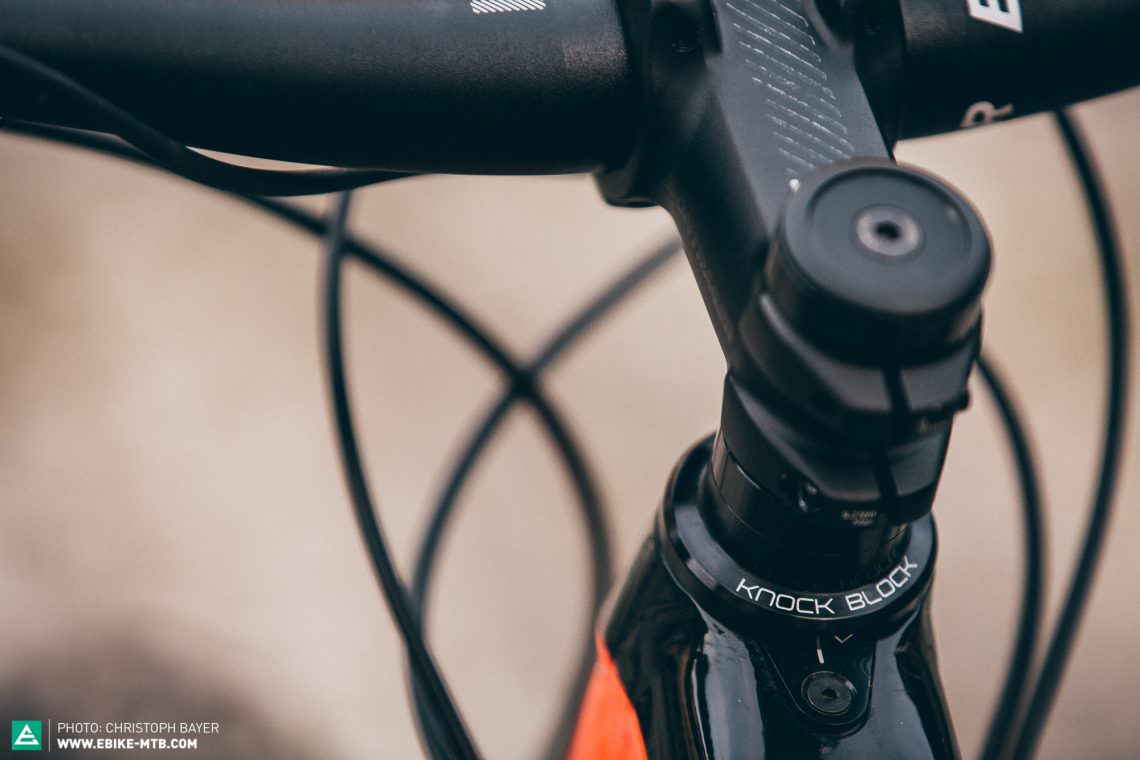
The KnockBlock of the Trek Powerfly LT limits the steering angle and thus prevents the fork from hitting and damaging the frame. It does, however, interfere when you want to load the bike into your car.
Which eMTB is the best?
The demands for the best eMTB are high. It has to climb efficiently, be comfortable to ride, be very stable and composed, yet, on top of that, be a lot of fun on the descents. Also, its integration, ease of use, and motor performance must set the benchmark. Although all the motors perform at a high level, the Bosch Performance CX is unable to keep up with the competition due to the high internal resistance it generates at over 25 km/h. It’s a pity for the Moustache Samedi Race 11: it’s by far the best Bosch bike we’ve ever ridden, but it’s slowed down by the motor. With a price tag of € 5,999, the Trek Powerfly 9 LT Plus is clearly the cheapest bike in this group test. It climbs very efficiently, but is held back on the downhills by a poor choice of tyres and slow handling – you should consider a tyre upgrade in your budget. The Haibike XDURO Nduro descends with the stability of a freight train, but it has to let the competition overtake it when going back up. With its long 180 mm travel and high weight (24.54 kg), it even feels cumbersome on the downhills.
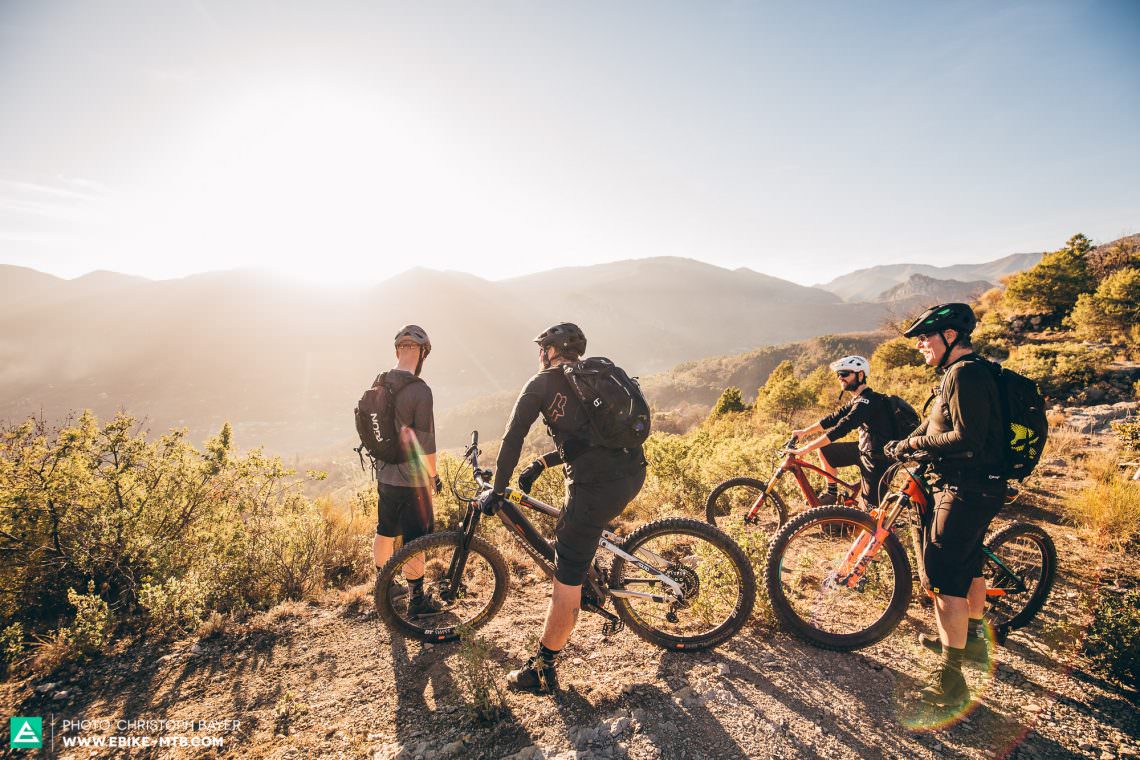
With its steep seat tube angle and powerful motor, the Rotwild E+ Ultra masters even the steepest climbs. Its high centre of gravity, however, negatively effects downhill handling. The GIANT FULL E+ 0 is a very solid eMTB where what you see is what you get, although the rather slack seat tube and bulbous-belly isn’t exactly pretty. Not so with the FOCUS SAM²: With its clean silhouette it is a bike for design lovers. But only if you get by with the small integrated battery. As soon as you mount an additional battery, not only the appearance suffers, but also the handling. The BMC Trailfox AMP has minor weaknesses in the componentry, finish and downhill handling – at a price of € 12,000 we expected considerably more. The Thömus Lightrider E1 fares better, it’s no bargain either, but the handling is outstanding. It’s a pity that the bike isn’t available outside of Switzerland. Another exotic specimen is the FANTIC XF1 Integra Enduro 160. The bike from the Italian motorcycle brand can’t deny its roots, tremendously composed and capable on the descents, though it cannot keep up with the competition when going back up – the 180 mm version of the Fantic is significantly better overall.
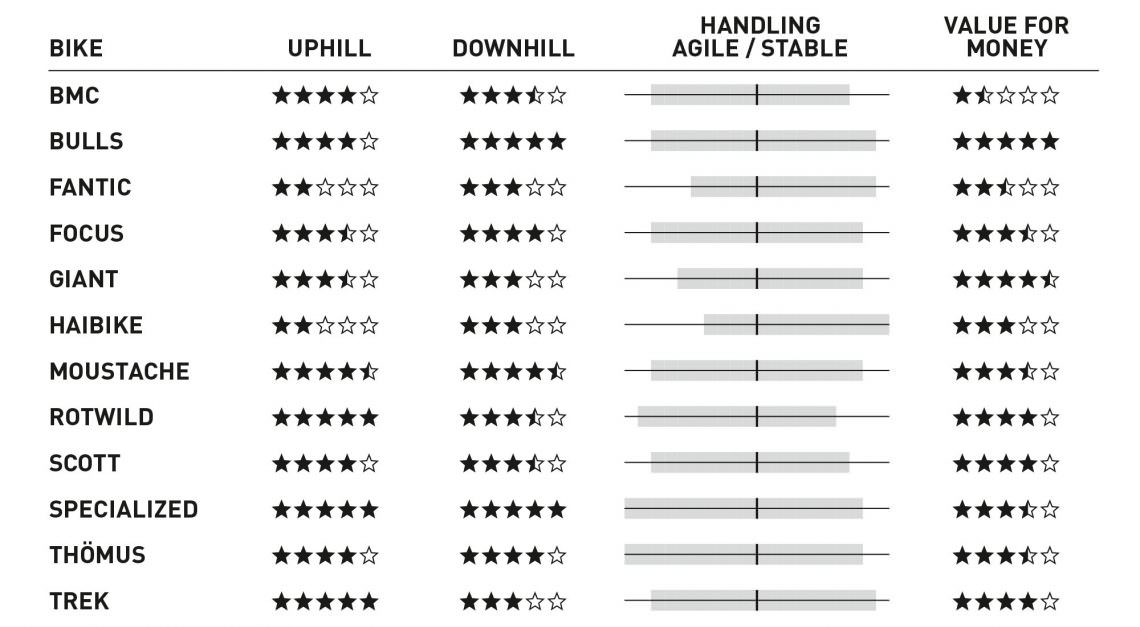
Two bikes clearly set themselves apart from the rest of the test field: the brand-new BULLS E-CORE EVO EN Di2 and the Specialized Turbo Levo S-Works Carbon. Both brands are huge players with great innovative power, and you can tell this from their bikes. The BULLS impressed with its cleverly thought-out modular battery concept, top-end, well-considered spec, and very balanced handling. “Climb aboard and feel at home” is its tagline. Thanks to the 180 mm of travel, the bike offers plenty of reserves for those larger hits, yet still feels agile and playful. With this brilliant combination, the € 6,499 BULLS secures itself the desired Best Value tip!
If you’re looking for even more performance and an even more refined bike, you’ll find what you’re looking for at Specialized. Their bike embodies the company slogan “Innovate or die” in a perfect way and is full of smart solutions. Many of them, such as the specially developed app for tuning the motor, the integration of the battery, and the small remote lever for selecting the support level, are obvious. Some, on the other hand, only become clear when you take a closer look – such as the Autosag valve on the shock for a simplified setup process, or the omission of a spoke magnet. The Levo also won us over with its outstanding riding characteristics, obviously. It rides comfortably, climbs quickly and efficiently, and has exactly the right mix of agility and stability. It’s the ultimate machine that promises to bring a huge smile to every rider’s face after just a few metres on board – no matter whether beginner or a pro. The Specialized Turbo Levo S-Works Carbon is currently the eMTB offering the best overall package, and thus the deserved Best in Test! The best eMTB of the 2018 season!
All bikes in test: BMC Trailfox AMP LTD | BULLS E-CORE EVO EN Di2 | FANTIC XF1 Integra Enduro 160 | FOCUS SAM² PRO | Giant Full-E+ 0 SX Pro | Haibike XDURO Nduro 10.0 | Moustache Samedi Race 11 | ROTWILD R.E+ ULTRA | SCOTT E-Genius 700 Tuned | Specialized Turbo Levo S-Works Carbon | Thömus Lightrider E1 – Team Di2 | Trek Powerfly 9 LT Plus
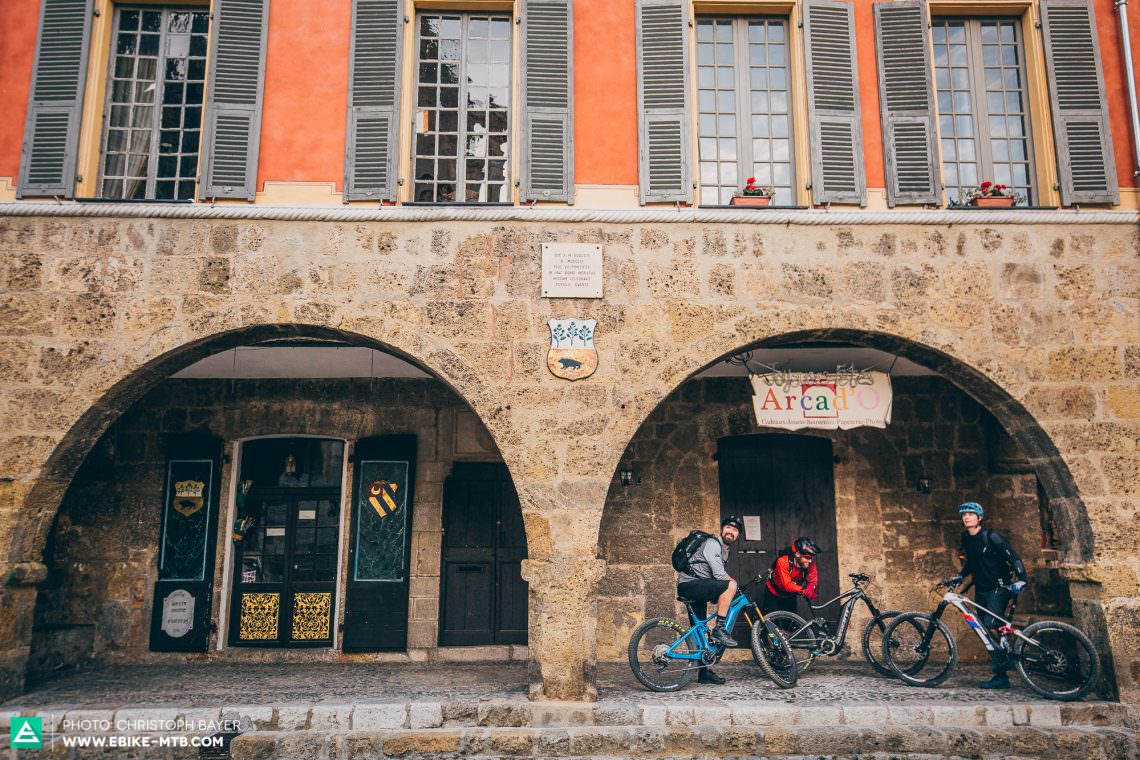
Did you enjoy this article? If so, we would be stoked if you decide to support us with a monthly contribution. By becoming a supporter of E-MOUNTAINBIKE, you will help secure a sustainable future for high-quality cycling journalism. Click here to learn more.
Words & Photos:




